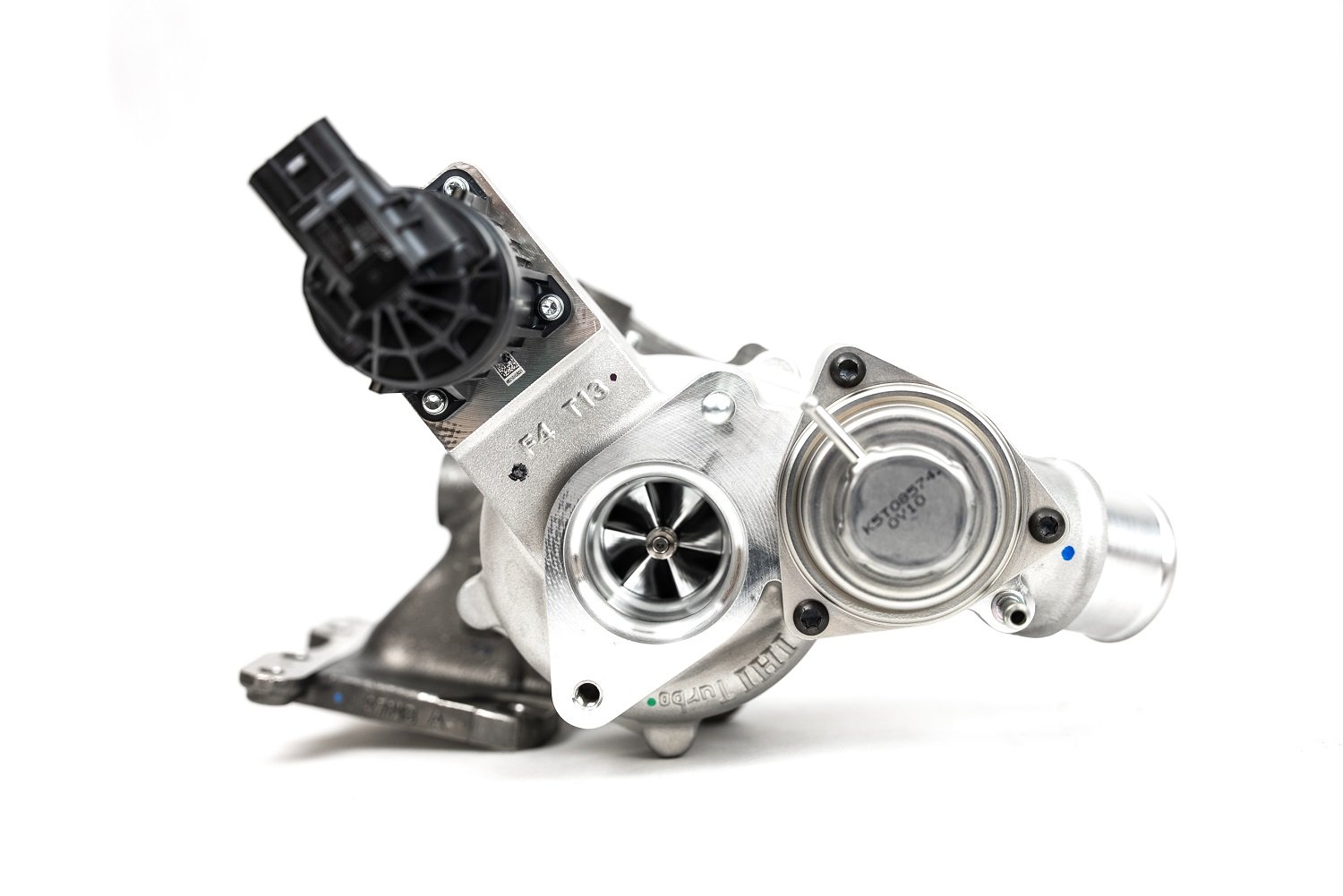11th Gen Honda Civic Turbocharger Design Blog Pt 2. - Material Selection
In part one of our design blog series for our upcoming 11th generation Honda Civic Turbocharger we compared the outgoing OE MHI 10th gen turbo to the current IHI 11th gen turbo. We looked at some of the key design features between the two and compared the numbers by looking at the wheel sizes side by side. In this blog, we want to share some of our goals for this new turbo upgrade and how it will take the FE1 Civic to the next level.
At the root of it, the goal of a larger performance turbo upgrade is to make more power. We want to create a unit that has the ability to both produce and sustain more horsepower and torque than its factory counterpart. We not only want to improve peak numbers but we want to see gains under the whole RPM power band. More about why this matters will come in a later blog. In setting up our design goals we took a fresh look at our W1 10th-gen unit and asked ourselves how we could improve it for the next generation. The W1 was a trendsetter in the 2016-2021 Honda Civic market and was the first true drop-in turbocharger upgrade. It paved the way for a bunch of clones. We learned a lot from the W1. We saw what worked and figured out what we could improve on for the 11th gen.
Before we even get into bigger components let's talk about materials. We want this new turbo to be more robust than anything we have designed to date. Here is how we are doing that.
Starting with the turbine housing we are upgrading it to a more resilient material. The W series of turbochargers use D5S steel for the turbine housing. It’s good metal and has been used in turbocharger technology for a long time. It is tried and true. This material excels in larger-frame turbochargers with port fuel injection and in applications that run cooler. In our time with the 10th gen, it has been proven that these little GDI engines make a lot of heat from a lot of boosts. Given the small frame, higher-than-normal levels of heat, and proximity of the WGA exit hole to the bore, small cracks can appear even on OE turbos. While these are not detrimental to performance it's not something we want to see. To keep this from happening and to eliminate any possibility of rust we will be utilizing a premium grade 310 Stainless Steel material for our manifolds. This material is much more resilient to high heat and keeps its finish longer. While a more expensive material than the outgoing iron its benefits justify the price.
Remember, heat is the killer of everything and your turbine wheel sees a lot of heat so we looked for improvements here as well. The turbine wheel also sees a lot of fuel and detergents so material that can handle the chemicals, as well as the heat, is key. There is no shortage of materials that can be used. Some options are SS 418, Mar 246, Inconel 713, Inconel 718, etc. SS 418 is a good starter material but does not tolerate heat over 1000 deg F very well. Mar 246 can tolerate more heat and chemicals than the SS 418 but production control of the material can be very complicated. We have had great success with Inconel 713 in the W-series lineup but are exploring upgraded variants of this super alloy like Inconel 718. This superalloy is a high-strength nickel-based superalloy used for cryogenic temperatures up to 1200°F. I won’t bore you with the details but rest assured that we will be using the latest in metallurgy for turbine wheel strength.
The compressor wheel will also be getting several updates in technology. The turbo in the 10th gen Civics with the L15 engine used flank milled machining techniques which work well but better technology is available. When we launched our FK8 turbo a few months back we utilized point-milled technology. Flank-milled is a cheaper and easier method of machining. It works well but leaves performance on the table. Flank-milled wheels are generally heavier and don't allow for as complex of a design. Point-milled is a much more precise and expensive way to machine the wheel. By using individual tool paths during machining much more complex designs and geometry can be obtained when creating this type of wheel. This translates into a better flowing wheel. We will be using point-milled wheels on the 11th gen.
Left = OEM 10th gen MHI Comp Wheel Right = OEM 11th gen IHI Comp Wheel
As we share more about the development of this new turbo we will explore all areas of turbo technology and dive more into picking the right-sized wheels that we can use to improve this next generation of Honda Civic and Acura Integra turbo tech. Thanks for reading with us and always be sure and REDEFINE the Aftermarket.
-Vincent







